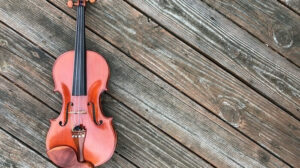
Wooden Music Box &The Beauty of Time: Awakening The Age Of Innocence
From the moment the lid of a wooden music box is lifted, a wave of nostalgia and emotion spills out in the delicate melody that

From the moment it begins to play, a wooden music box carries us into a world of nostalgia, resonating through the intricate craftsmanship that stands testament to generational artistry.
In this blog, we will explore the profound beauty found in the decorative patterns of these timeless pieces, revealing how they interweave history, culture, and personal memories into their delicate carvings and enchanting music box songs.
The wooden music box is more than an antique; it’s a piece of history, an art form, and a story that unfolds with each turn of its handle.
The detailed patterns etched into the wood tell a tale of bygone eras, reflecting the artistic expressions prevalent at the time of their creation.
Marquetry, a testament to exquisite craftsmanship, involves the art of applying pieces of veneer to a structure, forming decorative patterns, designs, or pictures—a technique frequently utilized in crafting wooden music box exteriors.
This meticulous approach not only showcases the craftsman’s precision and unwavering attention to detail, but also epitomizes their skill in assembling each fragment to contribute to a larger, more beautiful image.
It’s akin to individual notes in harmony within music box songs, each playing a crucial part in the grand symphony of visual art and melody.
The choice of wood in a wooden music box is crucial, not just for aesthetics but for acoustics. Woods like mahogany and oak, known for their density and stability, enhance the tonal quality of music box songs.
The wood’s natural properties resonate with the music, creating a warm, rich sound that’s as captivating as the patterns adorning the box.
The decorative patterns on a wooden music box often reflect cultural narratives and folklore.
From the intricate Russian Zhostovo paintings to the romantic French Toile de Jouy, these designs are a window into the worlds they originated from, making each music box a keeper of stories, played out through their music box songs.
Music box songs are a central part of the experience, and having the option to personalize these melodies makes your wooden music box uniquely yours.
Whether it’s a popular tune from a classic movie or a traditional melody that runs in the family, these songs add a personal touch to the aesthetic allure of the box’s decorative patterns.
Maintaining the intricate beauty of a wooden music box requires dedication.
Regular cleaning, avoiding excessive sunlight or humidity, and occasional professional servicing help preserve both the intricate decorative patterns and the quality of the music box songs. With proper care, your music box can continue to enchant for generations.
The wooden music box has a rich history, with its melodious roots tracing back centuries. Below, we delve into the origins and progression of this exquisite artifact:
The earliest known mechanical musical devices, precursors to the wooden music box, date back to the 9th century.
However, it wasn’t until the 18th century in Europe that the first true music boxes came into existence.
Initially, they were small and played delicate music box songs, often being used as an accompaniment in clock towers.
In the early 19th century, the cylinder was introduced. Crafted from metal and later placed in wooden music boxes, these cylinders had tiny pins that plucked the tuned teeth of a steel comb, producing the box’s melody.
These devices could fit in a pocket or sit on a table, leading to their categorization as mini music boxes or small music boxes.
The mid to late 19th century marked the “Golden Age” of the wooden music box. They grew more elaborate and larger, with multiple tunes on interchangeable cylinders. This era saw the production of music boxes that played music box songs from operas and popular compositions of the time.
As we moved into the 20th century, music boxes, including those with wooden compositions, began to offer the option of customization.
This era allowed individuals to have a music box with custom song, providing a more personal connection to the music played.
Today’s wooden music box maintains its historical charm, still delighting with intricate designs and classical melodies.
Yet, they’ve also embraced modernity, often being fitted with electronic components, allowing for a wider range of music box songs and even the ability to play digital formats.
The design and decorative patterns of wooden music boxes vary significantly across different cultures. These variations are not just aesthetic; they’re reflections of diverse cultural identities:
Each wooden music box, through its design and the melodies it carries, narrates the story of its cultural background. Whether it’s a mini music box from Japan or a more substantial piece from Italy, the cultural significance imbued within its craft and music box songs is undeniable.
A wooden music box is a timeless emblem of artistic tradition, standing at the crossroads of visual art and musical magic.
The decorative patterns etched into each box carry the weight of history, culture, and individual craftsmanship. They’re not just tools for sound; they are storytellers, confidants, and heirlooms.
Whether you’re mesmerized by the complex art of marquetry, seeking a cultural narrative, or wishing to lose yourself in the dulcet melodies of music box songs, a wooden music box offers a gateway to a world where artistry and melody intertwine.
Thus, in each delicately crafted pattern and tune lies a story, waiting to be wound up and let loose into the heart.


From the moment the lid of a wooden music box is lifted, a wave of nostalgia and emotion spills out in the delicate melody that

A wooden music box is a timeless treasure, weaving memories with melodies. However, like all delicate things, it requires care to prolong its life and

A custom song music box is more than just a delightful curiosity; it’s a personalized portal to memories, emotions, and melodies that can last a

Every wood music box carries within it a piece of artistry, a delicate melody that often holds personal significance. The magic that emanates from these

From the moment the lid of a wooden music box is lifted, a wave of nostalgia and emotion spills out in the delicate melody that

From the moment it begins to play, a wooden music box carries us into a world of nostalgia, resonating through the intricate craftsmanship that stands

A wooden music box is a timeless treasure, weaving memories with melodies. However, like all delicate things, it requires care to prolong its life and

A custom song music box is more than just a delightful curiosity; it’s a personalized portal to memories, emotions, and melodies that can last a
Copyright © 2024 woodmusicbox. All Rights Reserved.